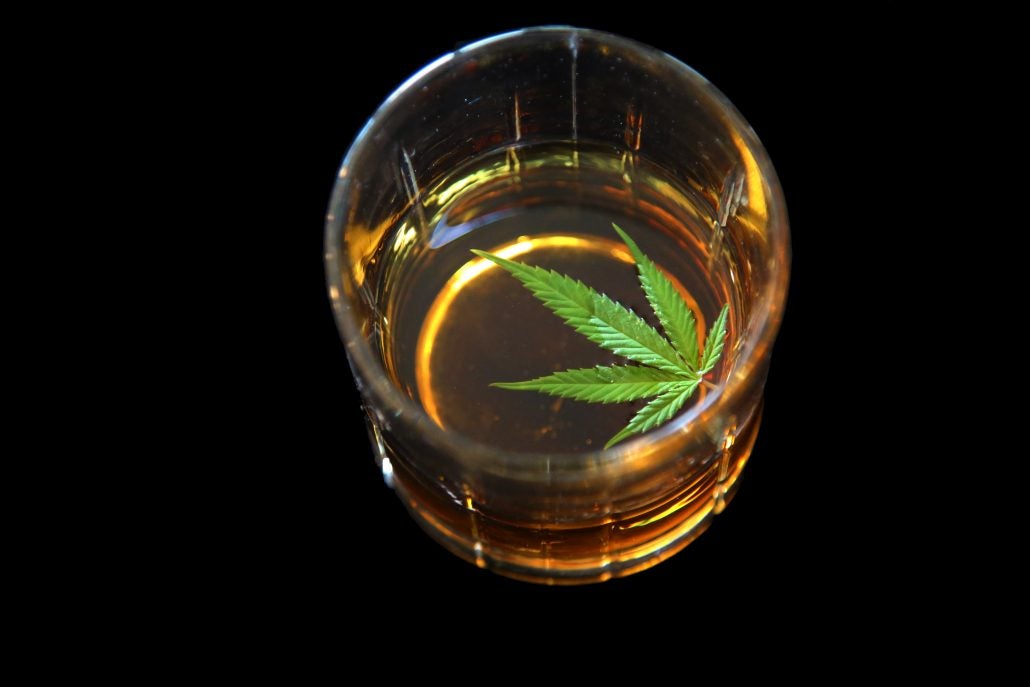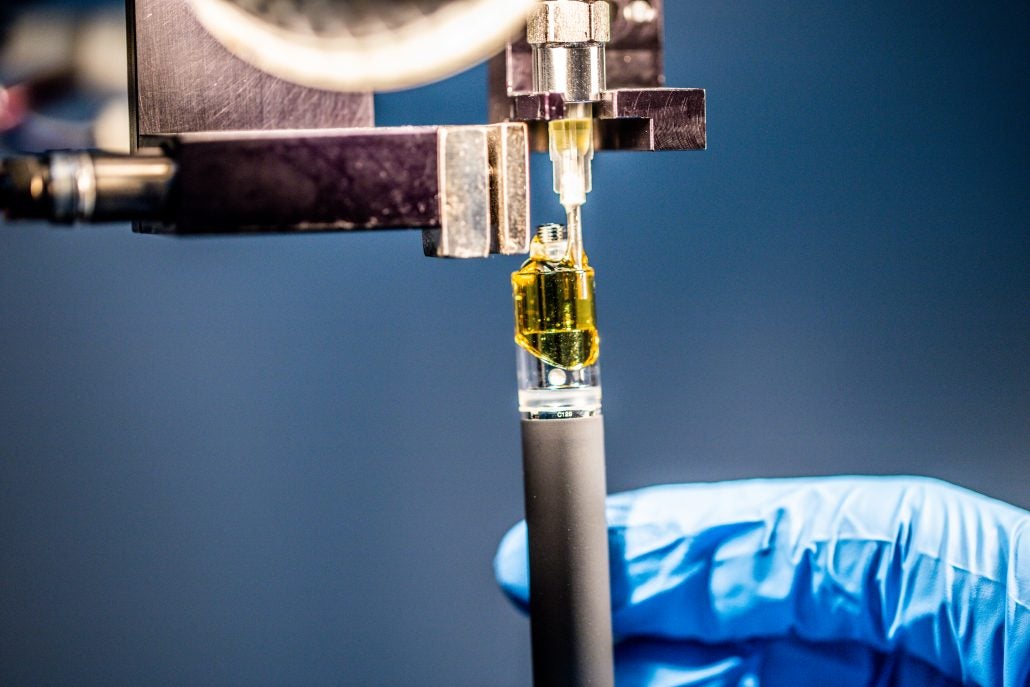The growing popularity of using cannabis for medicinal and therapeutic purposes sparked a revolution of cannabis products. From edibles to cannabis oils and distillate, the market is brimming with products claiming incredible purity and improved effects.
In this guide, we cut through the hyperbole and give you the straight facts about THC and CBD distillates, telling you how to use them and how they’re different from other concentrates and cannabis products.
What is Cannabis Distillate?
To better understand THC distillate, it’s necessary to know what it is first.
A distillate is a cannabis extract that has everything removed except for the desired cannabinoid(s).
This makes THC distillate one of the most refined and pure forms of THC on the market.
When it comes to cannabis, distillates focus on a specific cannabinoid and only contain that cannabinoid- usually either THC or CBD. All of the other cannabinoids, terpenes, and compounds in the plants are removed.
The main advantage of THC distillate is its higher purity than other concentrates and higher THC content.
THC distillate can contain anywhere between 90% to 99% THC, making it extremely powerful and quick to take effect.
Additionally, THC distillate is quite versatile in terms of how it’s consumed since the smell and taste of the plant are neutralized during the extraction process. Since the smell of cannabis is so noticeable (especially when you’re smoking it!), this makes distillate perfect for more discreet use when you don’t want to stink up the whole block.
The distillation process provides unprecedented control over how the final product will look and taste, as well as its desired effects. Not to mention the fact that by using THC distillate, you avoid all the harmful effects of inhaling burning cannabis flower buds.
THC distillate is one of the purest forms of THC you can find in the market.
This product will be right up the alley of those looking to take advantage of THC for its medicinal properties- but be warned. Because THC distillate is so pure and potent, you’ll want to be careful that you don’t overdo it, especially if you’re new to distillate.
- Keep in mind: Since distillate is an isolate of a particular cannabinoid, you’ll lose out on any benefits from the Entourage Effect.

How is Distillate Used?
Versatility is at the heart of THC distillate. It has never been easier to consume THC in a variety of ways. We have listed some of the most common ways people consume and use THC distillate.
Vaporizing
Vaporizing, more casually known as vaping, has quickly become one of the most popular ways of getting THC distillate and other cannabinoids into your system.
Vaping is quick and easy. It produces little to no smells or aroma, and its effects are almost immediate. Many THC distillates come in doses suitable for vaping machines. Just pop one into your vape, and you’re ready to go. Refills are easy, and alternate types of distillates will work just as well.
Dab
Dabs are a form of vaporizing, but instead of using a modern vape machine, controls and all, it uses a specialized pipe called a “dab rig” to vaporize concentrates like THC distillate over a surface heated with a torch.
Although dab rigs look similar to bongs in the sense that they’re both glass water pipes, there’s one critical difference between them.
A bong has a bowl that you pack with weed and light, while a dab rig has a nail, aka “banger,” that gets heated with a butane torch until it glows red.
Then, you’d place a “dab” of distillate on the nail and inhale the vapour.
Dab rigs are a bit more complicated in comparison to bongs and often require more extensive preparation. But dabbing leaves behind minimal THC distillate waste and is more effective than merely smoking it.
You might also like Jungle Ridge Honey Oil for dabbing.
But how does smoking compare?

Smoking
When rolling up your favourite strain in a joint or blunt, you can take your THC distillate and place it onto your rolling paper. Not only will your joint be more powerful and have more potent effects, but you can also decrease the amount of flower buds you are consuming, which will be easier on your lungs and wallet.
- Tip: You could also sprinkle it on top of your bowl if you’re into bongs.
Oral Use
If you’re not a fan of smoking or vaping in any form, the best way to consume THC is to ingest it. One way to do so is by directly applying a drop under your tongue, which is known as sublingual administration. A strong THC kick should follow quickly. One well known option is using Rick Simpson Oil.
Another, less common but more hedonistic way to consume THC distillate is by adding it to your favourite foods and drinks- kind of like salt- and turning it into a cannabis-infused edible.
Speaking of which…
Edibles
If you enjoy edibles and their prolonged effects, you can use THC distillate to make your own! Add a small amount of distillate to your brownie mix or other sweets, and you’ll get a great high without altering the flavour profile or characteristics of your food since the it has no odour or taste.
Mixing
If you plan to use several different cannabinoids such as THC and CBD, it might be nearly impossible to find a single product on the market with an ideal ratio for your needs. The easy solution is to keep a THC distillate on hand. Simply add the right amount of THC distillate to create your ideal mix.
How to Make THC Distillate

THC distillates are made using a unique production process called short-path distillation to extract the desired cannabinoid from the plant. This is creating a massive difference in the manufacturing of THC and other cannabis-related products as it allows for efficient extraction at lower temperatures.
The THC distillation process has two phases.
- The first phase involves separating terpenes in cannabis plants from cannabinoids.
- The second stage moves on to lipids, impurities, and solvents.
After going through both phases, the aroma-free THC distillate is ready.
Yet this doesn’t explain how to remove the other cannabinoids from the extract.
Higher temperatures are needed to vaporize cannabinoids. In order to raise temperatures to a high enough level so that the other cannabinoids can be separated, the distillation system needs to be able to handle thick substances. Cannabinoids in their pure form are thick and gooey, so any attempts to isolate them without the proper equipment will fail.
At those temperatures, CBD and many other cannabinoids crystalize, while THC turns into a thick, honey-like substance. The key is to separate the THC from the rest of the compounds. Only then can it be considered a genuine THC distillate suitable for packaging and shipping.
The entire THC distillation process is even more complicated than described above and therefore requires supervision by experienced and knowledgeable makers. This makes THC distillation a lousy idea for homemade, DIY-style operations. Leave this one to the professionals.
Distillate vs. Shatter
The debate between using a THC distillate and shatter heavily favours the former. Shatter has long occupied a special place in the hearts of cannabis enthusiasts. As a concentrate, it offers improved experience to consumers and more potent highs and effects.
Until THC distillate products started appearing on the market, shatter was about the strongest concentrate you could buy.
The potency of THC distillate is vastly superior to traditional shatter. Shatter has THC levels between 50% and 75%. On the other hand, distillate regularly scores between 90% and 99% in THC content.
Using THC distillate is more discreet than shatter, as it requires no elaborate devices such as a dab rig or vape pen to consume. Its odourless and aroma-free characteristics are ideal for use in public or at the workplace, provided you can step outside for a smoke break.
Finally, THC distillate ensures that THC has an immediate effect on the consumer, making it ideal for those suffering from chronic pain or other medical issues for which it might be prescribed.
Is There a CBD Distillate?
Yes, there are CBD distillates out there on the market. In terms of popularity and research, CBD is booming. New medicinal uses and applications are seeing the light of day every year.
The same process used for producing THC distillates applies to other cannabinoids in the cannabis plant.
CBD distillates are the purest form of CBD widely available to consumers. The alternatives come in the form of full-spectrum and wide-spectrum oils, which cannot come close in terms of purity, ease of use, and versatility.
The CBD distillate market in Canada serves as an excellent example of how manufacturers can deliver high-quality products to customers that need them. Our recommendation is to always try ordering CBD distillates directly from reputable sites like Budmail. This ensures that the products are genuine, fresh, and properly handled.
Where to buy cannabis distillate?
Why at Budmail, of course! Check out our selection here.
Resources
Weedmaps: What is Distillate? Cannabis Distillate Definition.
Heylo Cannabis: Distillate vs Full-Spectrum Cannabis Oil and Everything In-Between.

